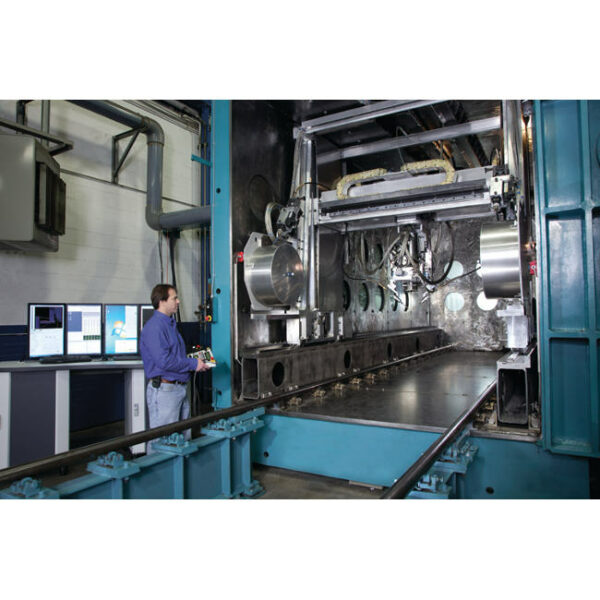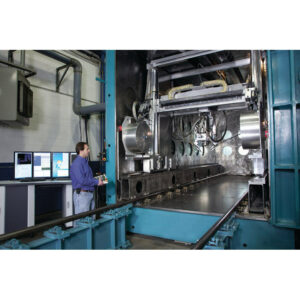Sciaky Inc. is an American manufacturer that was founded in 1939 and became quickly known for its industrial welding systems. They branched out into metal 3D printing systems in 2009, launching their solutions using their own technology called Electron Beam Additive Manufacturing, an offshoot of Directed Energy Deposition. These high-performance metal 3D printers save time and money on model production, with the ability to print almost any metal, including titanium and tantalum. They include the EBAM 110, EBAM 150, EBAM 200 and of course the EBAM 300, the largest offering from the company.
Electron Beam Additive Manufacturing, as the name suggests, includes the use of an electron beam gun which deposits metal layer-by-layer via a wire feedstock. The technology is attractive for a number of reasons, including the ability to combine two different metal alloys into a single melt pool thanks to the dual wirefeed system. This allows for the creation of custom alloy parts, something that is not always easy in additive manufacturing due to the nature of the different technologies and the metals.
Features of the EBAM 300 System
The EBAM 300 is not just the largest out of Sciaky’s 3D printing solutions, but it actually has the largest build envelope on the market for large metal production, allowing for parts that are over 19″ in length. Indeed, the total work area of the machine is 228” (5791 mm) wide x 48” (1219 mm) deep x 48” (1219 mm) high, making it ideal for 3D printing large metal parts. Despite this size, it also is relatively fast. Sciaky notes that the material deposition rates range from 7 to 20 of metal per hour, what the company claims to be the fastest on the market. Moroever, it shares the benefits of all of Sciaky’s systems, including those mentioned above.
Furthermore, Sciaky also points to its patented closed loop control, called IRISS® (Interlayer Real-time Imaging & Sensing System), which allows users to have consistent part geometry, mechanical properties, microstructure, metal chemistry, etc. when creating parts as a key feature of their machines. The system works by monitoring the metal deposition process in real time and making adjustments to the process parameters in order to compensate for changes that occur over time and reducing the likelihood of print failures.


